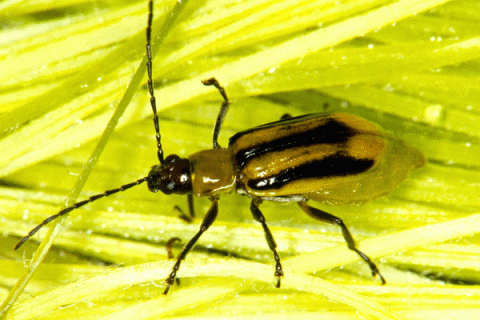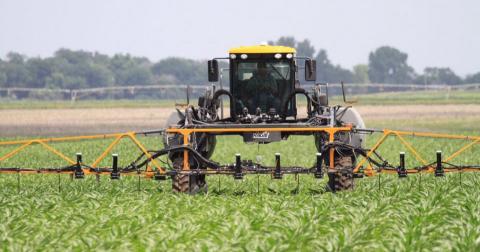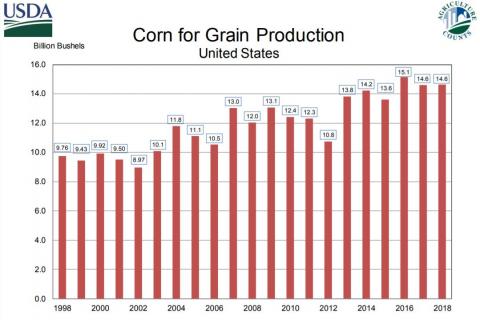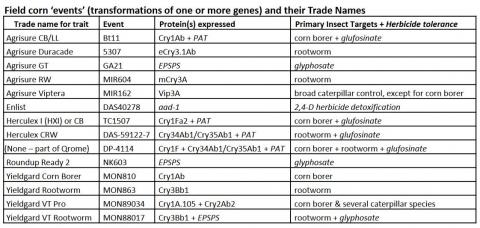Impact of Hybrid Selection, Planting Date, and Seeding Rates on Dryland Corn in Western Nebraska
December 14, 2018
Results from a one-year study in western Nebraska to evaluate the effects of planting date on dryland corn and whether seeding rate recommendations should be reconsidered for late planting dates.
NDA Encourages Livestock Producers to be Mindful of Mycotoxin Levels in Grain
November 16, 2018
The Nebraska Department of Agriculture encourages growers to be mindful of mycotoxin levels in corn being fed to livestock this winter. Summer drought in some areas couple with wet harvest conditions created a high risk for mycotoxins to grow.
Which Bt Traits Do You Need to Buy?
November 15, 2018
When it comes to buying corn seed, one way to save money is to ensure you are not investing in GMO insect protection traits you do not need for your particular farm or field. This guide can help you determine which traits you need where.
77% of Corn, 94% of Soybeans Now Harvested
November 13, 2018
See more of the USDA NASS report on Nebraska harvest progress and wheat emergence and condition.
Consequences of Fall-Applied N
November 9, 2018
A fall nitrogen application has a relatively high loss potential and is considered the riskiest N management practice. Consider breaking tradition and splitting your N applications next year to coincide with when your corn most needs more N.
USDA Forecasts Record Nebraska Corn and Soybean Yield and Production
November 8, 2018
Based on November 1 conditions, Nebraska's 2018 corn crop is forecast at 1.80 billion bushels, up 7% from last year's production. Soybean production is forecast at 345 million bushels, up 6% from last year.
Bt Trait Table Updated in Time for Seed Selection
November 8, 2018
The Bt Trait Table, the standard and authoritative reference for Bt toxins in corn, was updated in November 2018 to provide the latest information on changes in time for selecting seed for 2019.
Soybean Harvest at 90%; Corn at 65%
November 5, 2018
By late Sunday, 65% of Nebraska's corn had been harvested, equal to last year, and behind 72% for the five-year average. Soybean harvest was 90% done, near 94% last year, and behind the five-year average of 96%.





